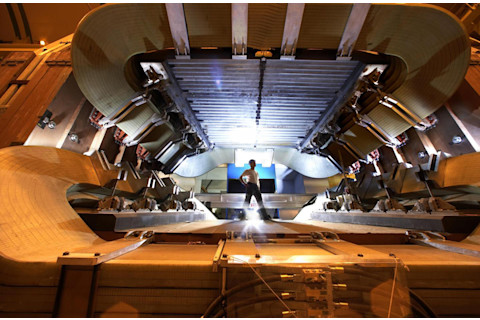
The LHCb magnet, shown under construction in 2008, studies bottom quarks and was responsible for revealing the pentaquark. | Peter Ginter/CERN
The world at scales smaller than a proton is strange — one might even say “quarky.”
Quarks are fundamental particles that come in six flavors — yes, that’s the official term — which also have antimatter equivalents. They’re never found alone, but nearly always in pairs (called mesons) or trios (called baryons), which include protons and neutrons. Four-quark particles, tetraquarks, have been observed only in particle collider experiments.
Naturally, physicists were surprised when they detected two different particles with five quarks.
The July announcement of these pentaquarks came from the Large Hadron Collider — the world’s largest particle accelerator, located in a 17-mile tunnel under the French-Swiss border. The LHCb experiment, which specifically looks at the behaviors of particles containing “bottom” flavored quarks (also called “beauty,” which is what the “b” stands for in LHCb), made the discovery.
The pentaquark discoveries represent a new, exotic form of matter that scientists don’t entirely understand yet. The particles lived for a tiny fraction of a second before disintegrating, but that’s enough to give scientists a new puzzle to ponder.
[This article originally appeared in print as "A 'Quarky' Quintent."]














